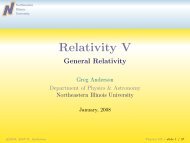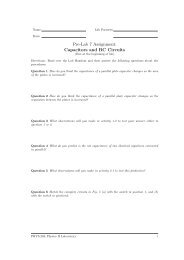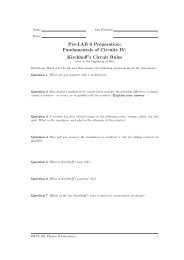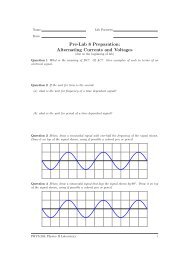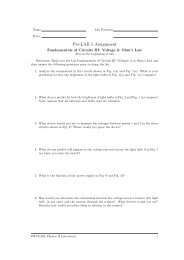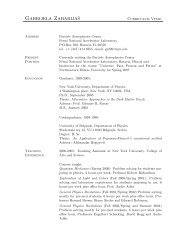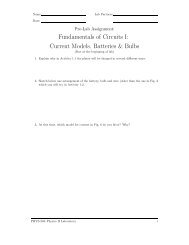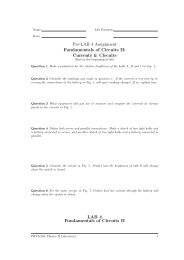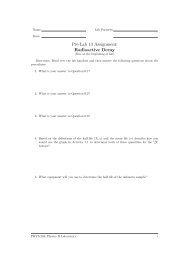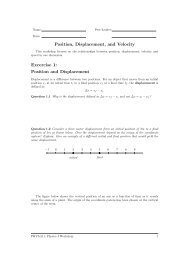Lab & Pre-lab #11
Lab & Pre-lab #11
Lab & Pre-lab #11
You also want an ePaper? Increase the reach of your titles
YUMPU automatically turns print PDFs into web optimized ePapers that Google loves.
Lenses and Images v 0.1<br />
Focal Point<br />
f<br />
f<br />
Focal Length<br />
Figure 1: Parallel light rays converge at the focal point.<br />
• light source.<br />
• F-diaphragm.<br />
• lens holders.<br />
• white projection screen.<br />
• meter stick.<br />
Activity 1.1: Focal Lengths of Convex Lenses<br />
Step 1: Examine the two convex lenses. The lenses have their focal length marked on them.<br />
One should have a focal length of +15 cm, the other +30 cm. Note which has the more<br />
sharply curved surfaces..<br />
Question 1.1 To make a lens with shorter focal length, should the surfaces have greater<br />
or less curvature than for a longer focal length lens Which lens would you say a lens is<br />
more “powerful” if it has a shorter focal length, or a longer focal length<br />
Light rays which start from an object located at the focal point follow the paths shown<br />
in Fig. 1, but in the reverse direction. These rays diverge from the focal point, enter the<br />
lens and come out of the lens parallel to each other. This situation is depicted in Fig. 2.<br />
Step 2: Mount the light source and F-diaphragm at one end of your optical bench. The F-<br />
diaphragm should be right up against the light source, as in Fig. 3. This F-diaphragm<br />
provides the ”object in each of our optical systems.<br />
PHYS-204: Physics II <strong>Lab</strong>oratory 2




